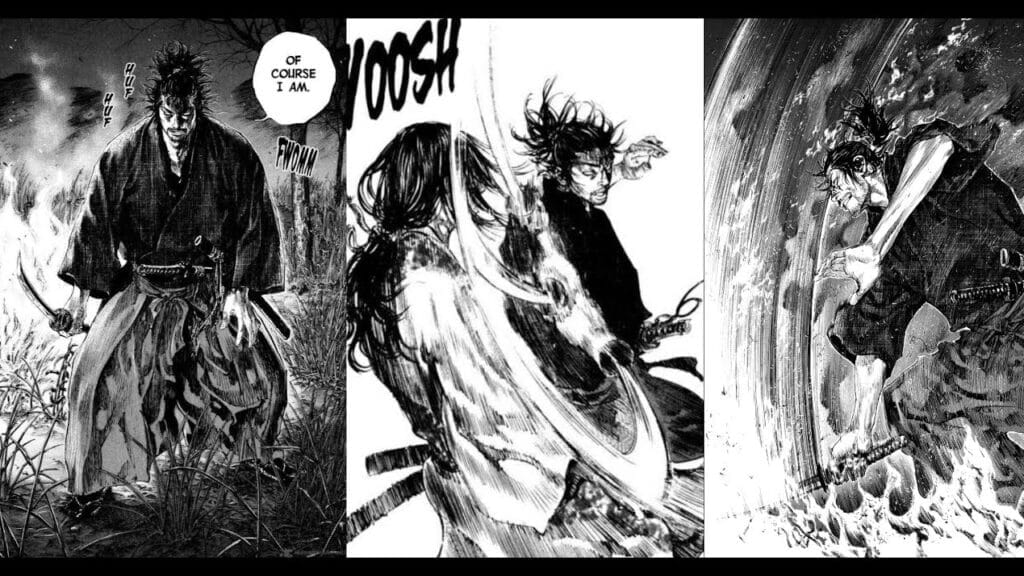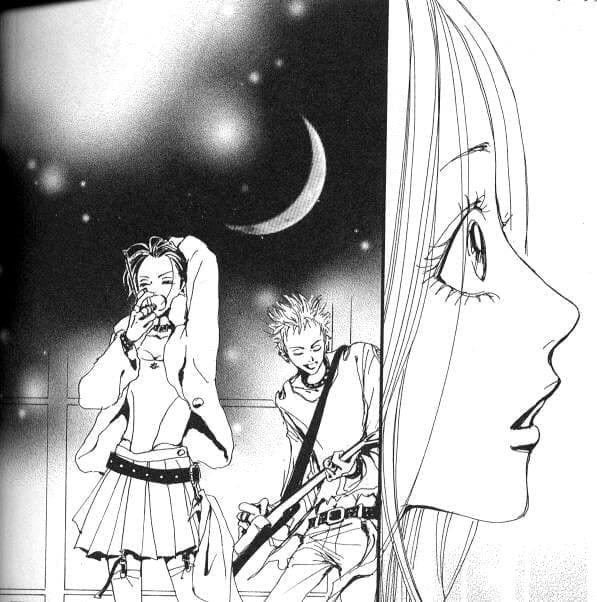We’ve all seen it. A manga cap of Berserk’s main character Guts leaning a knowing finger onto his forehead, with a pained half-smile spread across his bloodied and battle-worn face. The text above his haggard figure, though simple, alludes...
We’ve all seen it. A manga cap of Berserk’s main character Guts leaning a knowing finger onto his forehead, with a pained half-smile spread across his bloodied and battle-worn face. The text above his haggard figure, though simple, alludes to why he looks so agonized: “Can’t have a bad ending if you never have an ending.”

The meme has endured even after Berserk fans were semi-assured the perpetually-on-hiatus manga would still conclude after its author Kentaro Miura’s death. But although it’s been ongoing long enough for countless other manga and anime works to start and finish since it began its run, Berserk has far from faded into an obscure existence. And it’s not the only famous manga work that’s continued to be extremely popular despite constantly falling into the depths of hiatus.
Vinland Saga, Hunter x Hunter, and even works that will likely never be finished like Nana and Vagabond continue to be some of the most highly regarded anime and manga titles in Japan and the United States. While their stories are arguably tightly written and emotionally engaging, these works aren’t harmed by the fact they are often on hiatus. Rather, their popularity has been boosted by their constant contentless stretches. Just compare the popularity of on-hiatus manga to those that have completed their run.

Slam Dunk
Slam Dunk, one of the manga Takehiko Inoue stopped working on Vagabond to finish, is undoubtedly one of the most adored and respected sports titles in the manga world. It’s been deemed one of the best sports manga of all time by outlets like CBR and AniList, and the manga’s fan following earned the work an anime adaption in the ‘90s, as well as a film that opened in Japan last December and is slated to appear in US and Canadian theaters this summer. However, on Anilist, Slam Dunk’s manga (which concluded in 1996) doesn’t even have a stake in the site’s rankings of the most popular manga of all time. Meanwhile, the unfinished Vagabond has earned the third most popular manga of all time spot on the same website. In another example that compares one of an author’s completed works with one of their uncompleted pieces, Ai Yawaza’s completed Paradise Kiss is ranked as the 361st most popular manga of all time on AniList while her on-hiatus work Nana is ranked as the 105th most popular.
Even when looking at manga titles that aren’t by the same author and have more directly comparable plot elements like Claymore and Berserk (both feature medieval settings and supernatural forces), you’ll find that Claymore is ranked as the 73rd most popular manga of all time, while Berserk is in 4th place.
But an undying love of unfinished work isn’t unique to the manga community. In fact, the world has held a long-standing tradition of obsessing over never-finished art.

In the same vein as Inoue leaving Vagabond to work on projects like Real and return to titles like Slam Dunk, Leonardo Da Vinci stopped laboring over his famed half-finished painting Adoration of the Magi in favor of creating works for the Duke of Milan. And like Berserk writer Miura, Joseph Bassano died before he was able to put the final touches on The Baptism of Christ. Similarly to the no-ending-in-sight manga that continue to be cosplayed and talked about inside and outside of anime conventions, these partially-done paintings have been featured in art galleries across the world. In fact, New York City’s famed Metropolitan Museum of Art once cultivated an entire exhibition dedicated to featuring works left unfinished by their artists.
So then why are people, both the manga and non-manga adoring, so obsessed with fragmented media? The answer is simple. Works that have never had an ending are more popular than their finished counterparts because, without that moment of finality, the story continues to be actively present in its audience’s minds and hearts.

Vagabond
This leads us to The Mysterious Stranger by Mark Twain and back to the greater art world. A work that, while not taught in schools like many of Twain’s other pieces, is one of the author’s most discussed novels. If you were to search for research papers about the book on Google Scholar, you’d be met with 528,000 results, while The Adventures of Huckleberry Finn would yield 29,000 and The Adventures of Tom Sawyer offers 28,100. So, why then, is The Mysterious Stranger so much more popular than its contemporaries? Like the other influential creative works we mentioned earlier, this novel was never officially completed by the author.
After Twain’s death, though, the author’s editors stepped in to complete the work so that it could eventually go on to publication. And since this piece of fiction was given something equivalent to a fan fiction ending, Mark Twain’s Mysterious Stranger has continued to fascinate and inspire scholars and artists.
The 1985 claymation film The Adventures of Mark Twain highlighted a section of the novel (which was recently circulating on social media) and an opera called Mysterious 44 was influenced by the work. Moreover, while not confirmed, many have theorized that Fallout’s “Mysterious Stranger” and Red Dead Redemption’s “Strange Man” characters drew inspiration from the piece.
In the same way, the unfinished Mysterious Stranger has attracted the attention of scholars and artists, manga that have and likely never will end the way the author intended them to have amassed a following of fans that constantly create headcanons about how the story could end.

NANA
Videos that speculate how Berserk will finish on YouTube are plentiful as they are popular. One video on the topic by YouTuber BOOFIRE191 amassed over 318,000 views; another by Stalgul earned over 894,000. And in one incredibly creative example, after the manga D.Gray-man went on hiatus for almost three years, a Deviantart creator actually wrote and began illustrating D.Gray-man Alt, a fan-made offshoot of the official canon that was intended to act as an alternate end to the series many thought would never return to serialization. However, while D.Gray-man did eventually publish a new chapter the same year D.Gray-man Alt started and the fan-made project consequently disbanded, the spirit behind this artist’s efforts narrative to the canon story showcases exactly what about being seemingly forever on-hiatus boosts an anime or manga’s popularity.
Dr. Stone, Princess Jellyfish, Magi: The Labyrinth of Magic, Your Lie in April, so many stories have vanished into the background after their endings have been told. But while these titles, and many others, have been resigned to “this is a good manga, you should check it out” status, unfinished works like Vagabond, Berserk, and Nana continue to hold a raw, emotional grasp on their fandoms, their stories forever ongoing in our minds. When we discuss them, like Guts in that famed Berserk meme, our faces grow pained, our hearts grow fond, and though we recommend these stories, we warn that they have no ending and may never get one. And call me a little selfish, but considering that a work being seemingly forever on hiatus makes it so its story doesn’t leave us, maybe it’s better that they never do.
Edited By: Masha Zhdanova
“Can’t Have a Bad Ending if You Never Have an Ending:” How being permanently on hiatus contributes to anime and manga titles’ popularity - Brianna Corley







